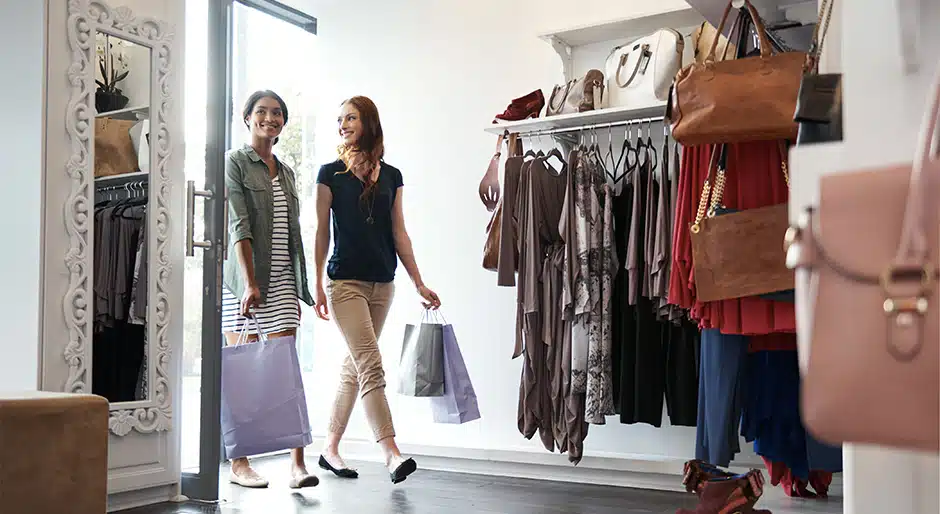Physical stores remain vital to retail
Is it a retail apocalypse? With continued wage growth acceleration and consumer confidence near an 18-year high, the retail marketplace has registered solid spending, according to Cushman & Wakefield’s third quarter U.S. shopping center report. Inflation-adjusted consumer expenditures show a steady 2.5 percent to 3 percent year-over-year growth pattern since the beginning of 2016. E-commerce sales accounted for approximately 11.5 percent of retail sales in 2017, which is expected to climb to 14 percent in 2019.
Physical stores remain vital to retailer survival in the evolving retail climate despite the retailer bankruptcy announcements, which have continued in 2018. As of early October, the year-to-date total is 14, compared with 36 total filings in 2017. Although these bankruptcies have led to a significant number of store closures, a recent report by IHL Group indicates store openings are outnumbering closures in 2018, with an estimated positive net gain of 3,835 stores nationally.
And online retailers are beginning to enter the brick-and-mortar space. A physical store uses the power of instant gratification, merchandising, employee service and dressing rooms to get shoppers to buy more and return fewer items, which boosts profits. The “clicks-to-bricks” phenomenon encompasses big names such as Amazon Books. Stiffening competition has caused online brands including Warby Parker (No. 174 in the Internet Retailer 2018 Top 1000), Bonobos (owned by Walmart, No. 3) and Casper (No. 132) to open physical stores. Mattress retailer Casper has about 20 stores and plans open 10 times as many in the next three years. Warby Parker expects to have 100 stores by the end of this year. These digital natives now operate more than 600 stores across the country, according to Green Street Advisors, a real estate research firm.
Opening a physical location has become cheaper due to the big-name brick-and-mortar retailers shedding stores or dying. And landlords need to be creative to fill in the space due to the growing desire for trendy consumer retail experiences. To further reduce risk, landlords are offering to help pay for store remodeling and taking a small percentage of sales instead of monthly rent, according to Bloomberg.
Cushman & Wakefield reported occupancy growth has continued for non-mall shopping centers overall, although the pace has notably cooled from the post-recession average. Net absorption reached nearly 5.7 million square feet in the third quarter of 2018, bringing the year-to-date total to 16.2 million square feet. This compares with 19.9 million square feet in the first three quarters of 2017 and 29.7 million square feet over the same period in 2016. The Pacific and Mountain regions account for 45 percent of the year-to-date demand, with net absorption totaling 3.9 million square feet and 3.6 million square feet, respectively, in the first three quarters. Houston and Phoenix have the strongest year-to-date occupancy growth of all individual markets, with a combined total of nearly 2.9 million square feet.
The vacancy rate for non-mall shopping centers ended third quarter 2018 at 6.5 percent, unchanged from the previous quarter, but down from 6.7 percent at year-end 2017. The Pacific and Northeast regions both have vacancy rates under 6.0 percent, led by Boston and San Jose, which boast the lowest shopping center vacancy rates in the nation at just 3.4 percent and 3.8 percent, respectively. Raleigh/Durham, Miami and Charleston follow closely, all with vacancy rates of 3.9 percent.
At the close of the third quarter, approximately 11.4 million square feet of new inventory had been delivered year-to-date across the United States.
The majority of the occupancy growth year-to-date has taken place among neighborhood/community centers. Net absorption for this sector totaled 11.8 million square feet for the first three quarters of 2018. The vacancy rate for neighborhood/community centers declined to 7.1 percent in the third quarter of this year, down 10 basis points from the previous quarter and down from 7.4 percent at year-end 2017.
Occupancy among power centers reflects the estimated closures of 800 Toys ’R Us stores, with negative absorption of almost –1.1 percent since June 2018. This brought the vacancy rate back up to 5 percent in third quarter 2018, identical to the year-end 2017 figure. Year-to-date net absorption in the power center sector, however, remains positive for 2018 — at 586,589 square feet — and there are a handful of mid- to big-box tenants in expansion mode, particularly among fitness/health, entertainment and off-price categories.
The top contraction categories continue to be department and apparel stores, which are typically concentrated in malls. Drug stores also fell into the consolidation column this year, largely due to the expected closings of 600 redundant store locations resulting from Walgreens’ purchase of 1,932 Rite Aid stores in 2017. Grocery stores, particularly those of the discount, organic or ethnic variety, continue to expand and have an ideal size requirement to fill these drug store vacancies, as do superstores that are expanding with a smaller focused footprint.
Restaurants remain in expansion mode, but plans are tapering off after eight years of robust growth across the sector. According to IHL Group’s findings, more retail locations are opening in 2018 than restaurants, a flip from 2017, when restaurant openings outpaced retail openings three to one. Dollar stores, discounters and off-price apparel concepts also continue aggressive growth.
Pop-up store activity will fill some of the vacancies in the marketplace during fourth quarter 2018. Cushman & Wakefield estimated approximately 90 percent of temporary storefront activity is still driven by holiday season pop-up tenants. Although these shops may move the vacancy needle by a basis point or two nationally in the second half of the year, the effect will be minimal and temporary.

